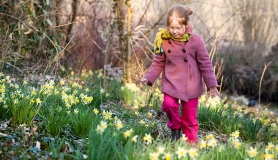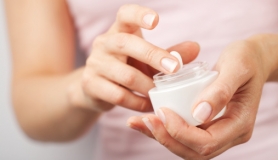We don’t actually ‘keep’ bees. After all they’re not domestic pets; they’re not tame and are free to fly away should they choose. I used to think bees might be better off without us interfering in their lives and commodifying them. But no, in our current world situation they are struggling to manage without our intervention. We are a final part of an uneasy symbiosis. My 13-year-old daughter and I found this out when we went along to a local Bee Keeping Association meeting a couple of years ago.
Together we followed this up with their ‘bee keeping’ course. We found out that there is a tiny mite with an awesome sounding name; the Varroa destructor that destroys hives from the inside out. Literally the inside. As the queen lays her eggs in her immaculately prepared wax cells and right before worker bees seal them over, the mites crawl in. The Varroa mite is estimated to have spread to every colony, every hive in the entire world (bar Australia who have very strict rules on all bee related imports). Due to drone (male) bees sociable tendency to visit many colonies they carry the mites from hive to hive. Without the help of humans to manage the Varroa mite populations in a hive, bee numbers are dropping significantly. Add to that the other assaults on bees; pollution, pesticides and fertilisers, electromagnetic frequency hazards from our increasingly prevalent technology and there’s a constant stream of reasons as to why bee populations are declining.
Creating new hives
We try really hard not to let our colony of bees ‘swarm’. This is lead by the queen, who takes half of the bee population with her. Out there in the wild it’s likely the Varroa mite will reign supreme. Bees inevitably do want to swarm though, every year or every other year, it’s just what they do. So my daughter and I learned how to manage this by helping the queen and some bees into a brand new hive. We left brood behind in the original hive that the worker bees could feed and use to rear a new queen. So then you end up with two queens, two hives. You can see how as the years progress some people end up with lots of hives right? (Or help others by giving away a queen and some brood to help start new beekeepers off – this was how we got started).
A healthy colony
Once we felt ready, armed with knowledge, we selected cedar wood hives to build and bought ourselves suits and a smoker and the other items our mentor had introduced to us. One of the great things about the course were the practical sessions where we toured each hive in our teacher’s garden, learned how to do a thorough inspection and what to look for in a healthy colony and what to do about any problems. There is nothing quite like the sound of thousands of bees. The first time the roof was lifted from a hive I stood transfixed, the sound of 60,000 bees vibrating in a single pulsing hum filled my brain and body. One person in our group felt overwhelmed and had to step away. I stepped in closer, enthralled. Some say the frequency of vibration and sound of a peaceful hive is healing to those who hear and experience it. I can well believe it. Some are terrified and the sound fills them with anxiety. It’s game over in their bee keeping journey. It’s worth doing a course to check which category you might fall into before you commit to being a beekeeper.
Bee Conservation
You see how I have not even mentioned honey? I didn’t meet a single person on the course who was interested in bee keeping because they loved to eat honey. There were those interested in bee conservation, there was a farmer who wanted to have his own hives in his orchards rather than hiring in hive pollinators each season. There were family groups wanting to learn something new and have a common interest. Some left and decided that they were not going to keep bees after appreciating the knowledge needed, the initial financial outlay and constant commitment to monitor the health of their colony. As for us we went along for the fun of it, the novelty of learning something new. Also, it had been on my radar of things I’d wanted to learn about for a very long time. And it was fun! We looked at dead insects and learned to identify them. We learned, hammers in hand, how to put together frames and brood boxes and then the shallower stacked boxes used by the bees to store honey, the supers. We learned about the differing seasonal care and behaviour of the honeybee, the history of their evolution. Cute anecdotes too: did you know that bees prefer female beekeepers whom they sting less than males? It seems to be a matter of preferential pheromones. We learned to identify the different bees in a hive: the queen, the female worker bees and the lesser number of drones, those male bees who cannot sting, who don’t collect pollen or nectar and who are pushed out of the hive come winter.
Getting started
So who should get involved with bee keeping? Are there different ways, methods? Do you need loads of space? Nope. Hives can go on roof tops and in tiny gardens. There are many types of hives, pick which you feel will work for you most easily when inspecting a colony. Vegans for one should definitely look into bee keeping. Yup, those who claim bee keeping is heinous and that honey consumption is theft. Vegans would make good preservation beekeepers.
Claire lives in Herefordshire with her family and several hives @borderstories
6 things to consider about bee keeping
- Hunt out your local Bee Keeping Association group (bbka.org.uk), there is likely to be one nearby with regular meet ups, tours of various hives and courses.
- Read, read, read all you can on managing Varroa as this will inevitably be an essential part of your hive management and bee health inspections. There are ways to help bees that are nontoxic and easy, such as sieving icing sugar over them. Doing this forces the bees to meticulously clean themselves and remove the Varroa, which fall out of the mesh floor at the bottom of the hive. Some beekeepers feed their bees a fondant with certain essential oils said to kill mites.
- Buy yourself a good bee manual so that you have a physical copy of something on hand to problem shoot and become familiar with it. I particularly like the Collins Beekeeping Bible which has lots of photographs.
- Factor in the initial cost of hives, suits etc. Hunt around. Beekeepers are typically happy to loan out the less usual kit items. There are a few types of hives available to purchase and build so research which you like and why. They need to be specific in design and contain the right ‘bee space’ so that bees may move around easily without excess gaps that they might otherwise plug with wax and make inspection exceedingly difficult.
- Do not expect to remove any honey in your first year. We did not. The second year we removed only two frames. It was never about the honey. But bees do make an incredible amount in excess of their winter needs, some think this is why they swarm – to have a bigger place to live since their honey takes up so much. Taking a little is a great reward for your hard work and in gratitude, wonder and reverence of the amazing substance that bees create – a local back yard sugar, specific to your locality and flora. Tasting the honey from the bees you care for is a great feeling. What is more sustainable and low impact than a local back garden bee-excess sweetener rich in phytonutrients, which is antibacterial and antifungal plus truly delicious?
- Plant bee loving flowers! I live in the countryside and once the orchards have flowered there’s a big woody-stem-green flowerless gap until some crops and trees flower. Bees in towns fair considerably better since there are so many private gardens and flowers. Check out friendsoftheearth.uk/nature/beefriendly-plants-every-season







